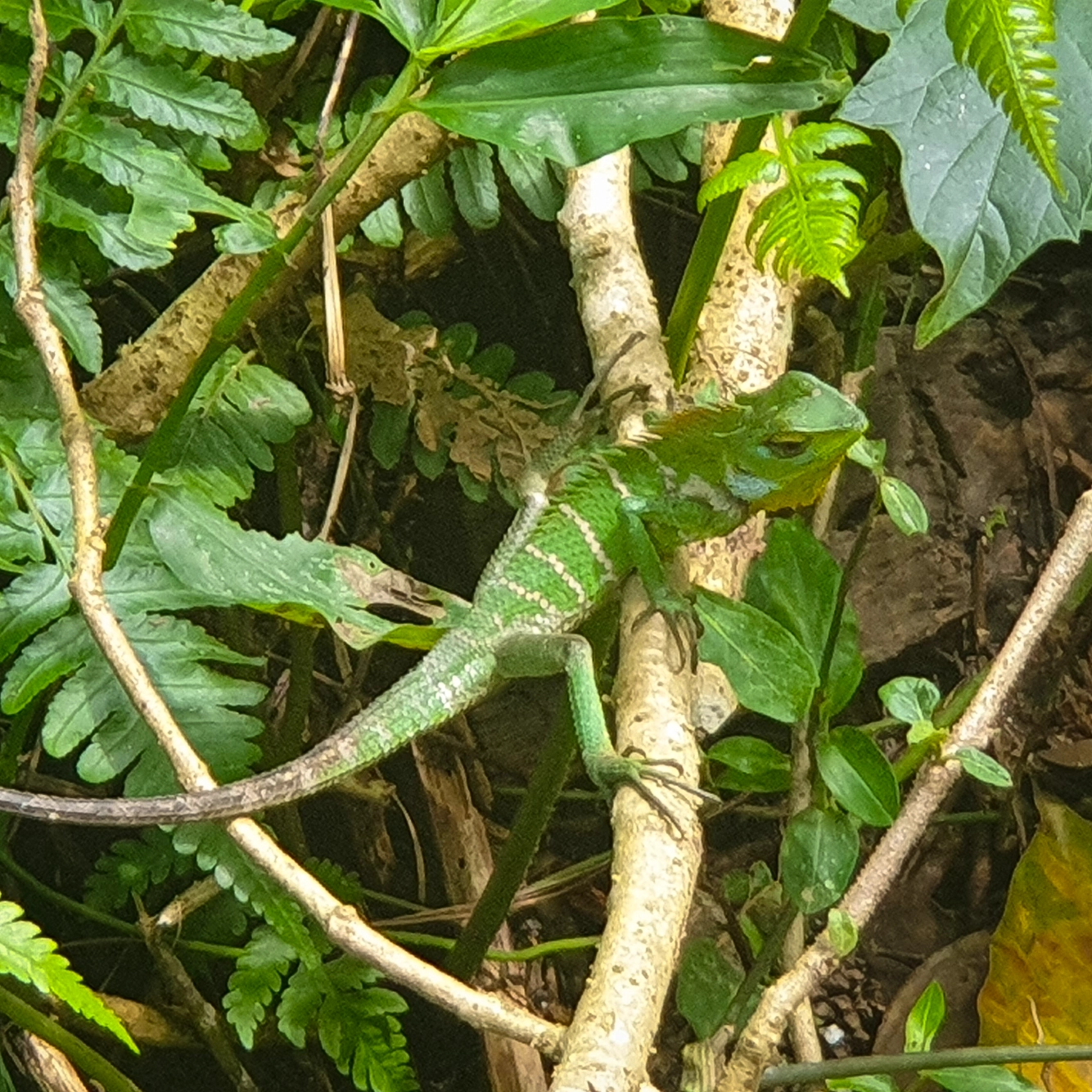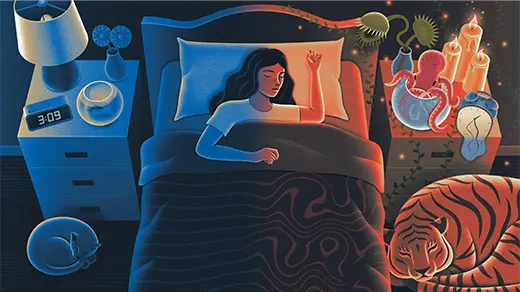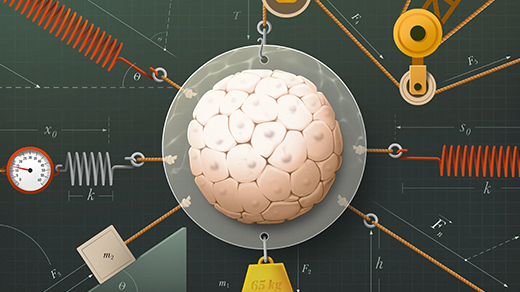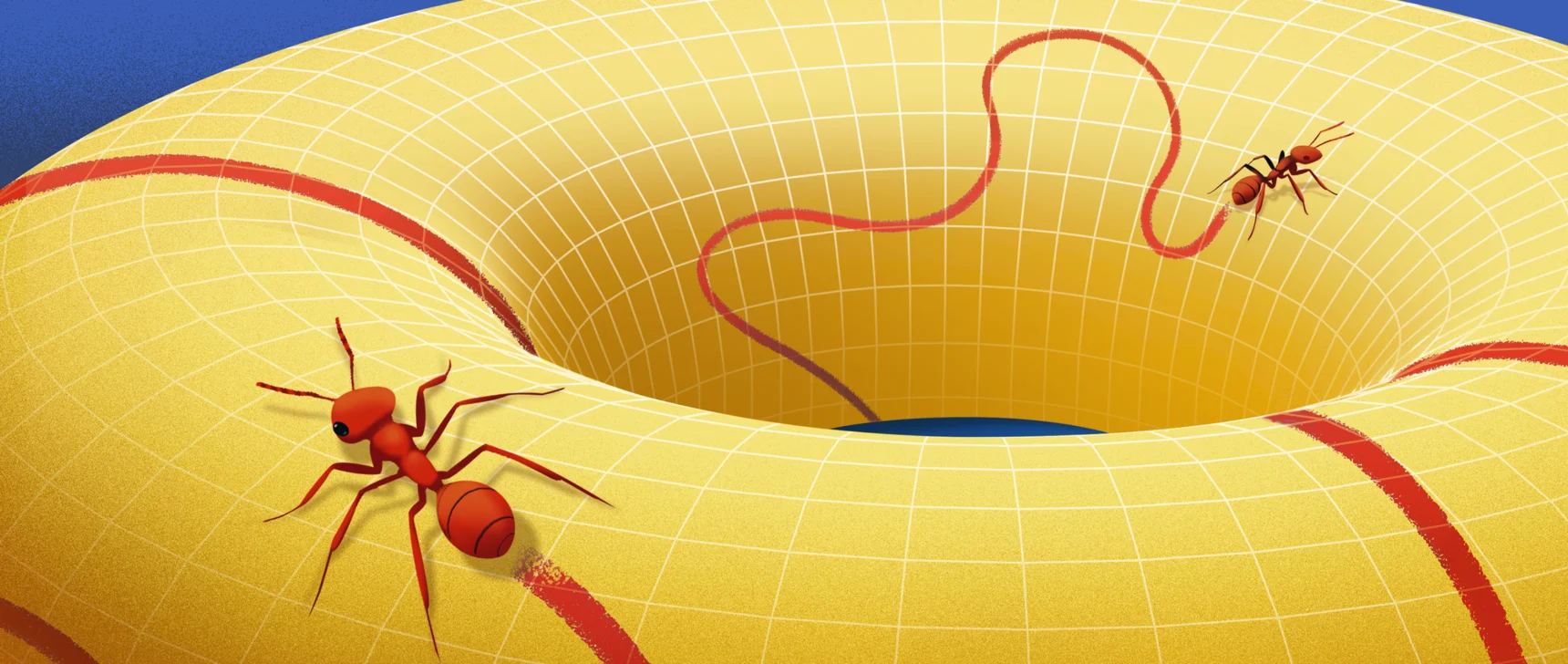How Your Brain Creates ‘Aha’ Moments and Why They Stick
Introduction
Here are three words: pine, crab, sauce. There’s a fourth word that combines with each of the others to create another common word. What is it?
When the answer finally comes to you, it’ll likely feel instantaneous. You might even say “Aha!” This kind of sudden realization is known as insight, and a research team recently uncovered how the brain produces it, which suggests why insightful ideas tend to stick in our memory.
Maxi Becker, a cognitive neuroscientist at Duke University, first got interested in insight after reading the landmark 1962 book The Structure of Scientific Revolutions by the historian and philosopher of science Thomas Kuhn. “He describes how some ideas are so powerful that they can completely shift the way an entire field thinks,” she said. “That got me wondering: How does the brain come up with those kinds of ideas? How can a single thought change how we see the world?”
Such moments of insight are written across history. According to the Roman architect and engineer Vitruvius, in the third century BCE the Greek mathematician Archimedes suddenly exclaimed “Eureka!” after he slid into a bathtub and saw the water level rise by an amount equal to his submerged volume (although this tale may be apocryphal). In the 17th century, according to lore, Sir Isaac Newton had a breakthrough in understanding gravity after an apple fell on his head. In the early 1900s, Einstein came to a sudden realization that “if a man falls freely, he would not feel his weight,” which led him to his theory of relativity, as he later described in a lecture.
Insights are not limited to geniuses: We have these cognitive experiences all the time when solving riddles or dealing with social or intellectual problems. They are distinct from analytical problem-solving, such as the process of doing formulaic algebra, in which you arrive at a solution slowly and gradually as if you’re getting warmer. Instead, insights often follow periods of confusion. You never feel as if you’re getting warmer; rather, you go from cold to hot, seemingly in an instant. Or, as the neuropsychologist Donald Hebb, known for his work building neurobiological models of learning, wrote in the 1940s, sometimes “learning occurs as a single jump, an all-or-none affair.”

According to legend, the Greek mathematician Archimedes exclaimed “Eureka!” after his body caused the water level to rise in his bath, suggesting a way to calculate volume.
Ann Rosan Picture Library
An abrupt cognitive shift in how the mind understands information is known as a representational change. Although researchers have inferred sudden shifts in understanding from the behavior of subjects, they have not pinned down how the brain supports representational change.
During moments of insight, representational change typically occurs, said John Kounios, a cognitive neuroscientist at Drexel University and co-author of the book The Eureka Factor: Aha Moments, Creative Insight, and the Brain. “The question is: How is it occurring?”
Insightful Activity
While at Humboldt University of Berlin, Becker set out to uncover this neural signature of insight. Given that it’s nearly impossible to fabricate life-changing, field-altering insights in the lab, her team needed to identify a simple task that could produce a sudden feeling of understanding rather than a slowly unfolding solution.
They turned to abstracted black-and-white pictures called Mooney images, which are made by cranking up the contrast on a photograph all the way so that the subjects — a dog or a coffee mug, for example — are unrecognizable at first. The pictures pose a challenge for human brains, which typically identify objects by piecing together their different parts. But if given enough time with a Mooney image, even a few seconds, the brain can rearrange the contours to recognize the pictured object — and trigger the insightful “aha” feeling, a representational change.
Over the course of two days, Becker had study participants lie in a functional magnetic resonance imaging (fMRI) scanner, which detects blood flow in the brain as a proxy for neural activity, and view a series of 120 Mooney images. After 10 seconds of viewing a single image, the participant would indicate whether they recognized the pictured object. If they did, they would then answer a series of questions about the suddenness, positive emotion and certainty associated with their experience — three measures that have been linked to moments of insight.
Becker and her team then used neural networks to parse the fMRI data, looking to identify consistent changes in brain activity shared by participants when they correctly recognized Mooney images. They observed that when a participant noticed a hidden object, brain activity increased in the ventral occipitotemporal cortex (VOTC), a region responsible for recognizing visual patterns in the environment; the amygdala, which processes both positive and negative emotions; and the hippocampus, a deep-brain structure involved in handling memories. This activity was greater for experiences rated more certain and emotionally positive — in other words, more insightful ones.
The hippocampus is sometimes known as the brain’s “mismatch detector,” Becker said, because it reacts when an input doesn’t align with expectations. In this case, insight leads a once-meaningless image to gain meaning, going against the brain’s predictions.

Maxi Becker, a cognitive neuroscientist at Duke University, explores what insight looks like in the brain.
Courtesy of Maxi Becker
These regions — the hippocampus, amygdala and VOTC — create “a plausible network of brain areas” behind representational change, said Kounios, who was not involved in the study. These findings finally “connect the psychological theory with the neural mechanism,” said Yuhua Yu, a postdoctoral researcher in neuroscience at the University of Arizona, who was also not involved with the study.
Becker and her team likely found representational change in the VOTC because of the visual nature of their stimuli. If they had chosen another type of stimulus, like words, the change would probably have appeared in language-processing areas of the brain.
Once the team had figured out which brain areas support insight, they wanted to probe whether these regions might be working together to create a lasting memory.
A Memory Boost
Since they began investigating insight, researchers have suspected that such experiences might boost memory. In his 1949 book The Organization of Behavior, Hebb wrote that “whatever insight is, we now know that it continually affects the learning of the adult mammal.” Insight not only feels notable or salient in the moment but also helps us retain new information as memory.
This memory boost, which became known as the insight-memory advantage, has since been studied in many types of problem-solving, including the unraveling of magic tricks and puzzles. “When you have an insight, you tend to be better able to remember the solution,” Becker said, compared to when you resolve a problem more gradually. She wanted to understand why.
A few days after the initial experiment, the team tested participants’ memory by having them look at more Mooney images online, including some they had seen before. Participants were better able to remember prior images that they had rated highly on the three aspects of insight. This suggested that the insight-memory advantage was real, but the team wanted to see what was going on under the hood. Did brain activity during insight predict better memory five days later?
The researchers found that the larger the activity boost in both the VOTC and the hippocampus during the initial insight, the better participants remembered the Mooney images. The big change in brain activity likely makes the experience more salient, Becker said, and salient experiences are known to better encode long-term memories.
While insight creates stronger memories of an idea, it doesn’t mean the idea is correct. Previous work has shown that the quicker, more certain and more pleasurable a solution feels, the more likely it is to be correct — but false insights can and do exist. In Becker’s study, participants wrongly identified the subjects of more than half the Mooney images they saw. Of those incorrect trials (which the researchers excluded from the analysis), the participants reported experiencing insight 40% of the time. In comparison, correct trials were accompanied by feelings of insight 65% of the time.
These kinds of studies of insight in the lab will set researchers up to look at how it functions in the real world. Once we decompose insight into “very simple tasks that we already understand well,” Becker said, we can “move on to more complex, truly creative tasks.”
Insight Into the Future
As a self-described uncreative person, Yu has been particularly fascinated by insight’s role in the creative process. Creativity is “like a magic power,” she said. “A really big creative idea is [often] associated with insight because a creative idea is in some way a leap in your cognitive world, and a leap will often elicit an insight or ‘aha’ feeling.”
However, Yu is finding that insight’s role in creativity might depend on the kind of problem a person is solving. In a recent study, she asked participants to come up with metaphors for scientific concepts and asked whether they used insight as they did so. The insight-driven metaphors weren’t more or less creative than those created through analytic thinking, she found — and the participants were more likely to remember the science concepts behind the latter.
This may be because, unlike the task of seeing a hidden object in a Mooney image, creating a metaphor tends to rely on slower cognitive problem-solving rather than sudden moments of insight, Becker suggested. The effects of insight therefore likely depend on the context.
Next, Yu wants to investigate insight in more contexts. “Most of the insight research is looking at insight in the problem-solving context and in the lab setting,” Yu said. She hopes that researchers will begin investigating “insight within many other domains, like in psychotherapy, in meditation, even in psychedelic experiences.”
Beyond offering a better understanding of how the human brain learns, these findings could have applications in classrooms. Kounios believes that applying insight-boosting strategies to teaching could lead to better learning outcomes for students. Insight seems to be a powerful and positive experience that generates accurate solutions, confidence in our answers and strong memories.
“It’s very intensive for a teacher to do this, but a lot of really good teachers try to get the students to have the insights themselves about how something works, and that will burn it into their memories,” Kounios said. “Another aspect of that [is], it’s very motivating, too.”
It’s a nice feeling when your brain suddenly comes up with an answer. Perhaps you’ve even experienced that feeling since reading this piece’s first sentence. Maybe it even hit you like an apple on the head.








